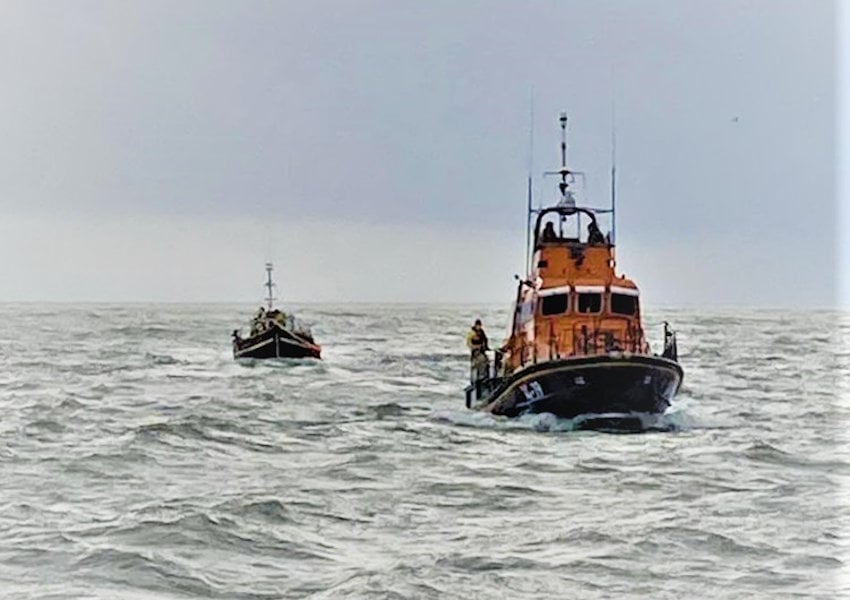Bundoran RNLI’s volunteer lifeboat crew were requested to launch yesterday afternoon (Tuesday 22 December) to reports of a 19ft vessel that had sunk off Killybegs.
Also tasked to the scene were the Sligo-based Irish Coast Guard helicopter Rescue 118 as well as the Killybegs Coast Guard RIB, while help was sought from other vessels in the area.
On arrival, the lifeboat crew found that two people who had been on the sunken vessel had already made their way to safety and were treated by an ambulance at the Killybegs slipway.
The lifeboat then assisted the coastguard RIB in securing the vessel.
Lifeboat helm Rory O’Connor said: “Thanks to quick actions of all involved, this was another successful outcome and the two people will get to spend Christmas with their loved ones.
“It’s another example of inter-agency cooperation and we were glad to be able to assist our Irish Coast Guard colleagues.”
The incident came just two days after another inter-agency operation to rescue a man whose small boat ran aground on rocks in Ballyshannon, as previously reported on Afloat.ie.
 Arklow RNLI’s all-weather lifeboat Ger Tigchlearr taking a stricken fishing vessel under tow (Photo: RNLI/Arklow)
Arklow RNLI’s all-weather lifeboat Ger Tigchlearr taking a stricken fishing vessel under tow (Photo: RNLI/Arklow)
In other lifeboat news, Arklow RNLI launched to the aid of two fishermen on a vessel in distress last Thursday 17 December.
As the volunteer crew of six were en route, further reports came in that the fishing vessel had freed the foul but was adrift and dragging its anchor — and in danger of being driven up onto the rocks at Kilmichael Point.
Once on scene, the lifeboat crew worked quickly with the casualty vessel’s crew of two to establish a tow line, before the vessel was towed safely back to Arklow.
Following the incident, Arklow RNLI community safety officer Mark Corcoran gave a special shoutout to coxswain Eddie McElheron on his first callout in command of the all-weather lifeboat Ger Tigchlearr.































































